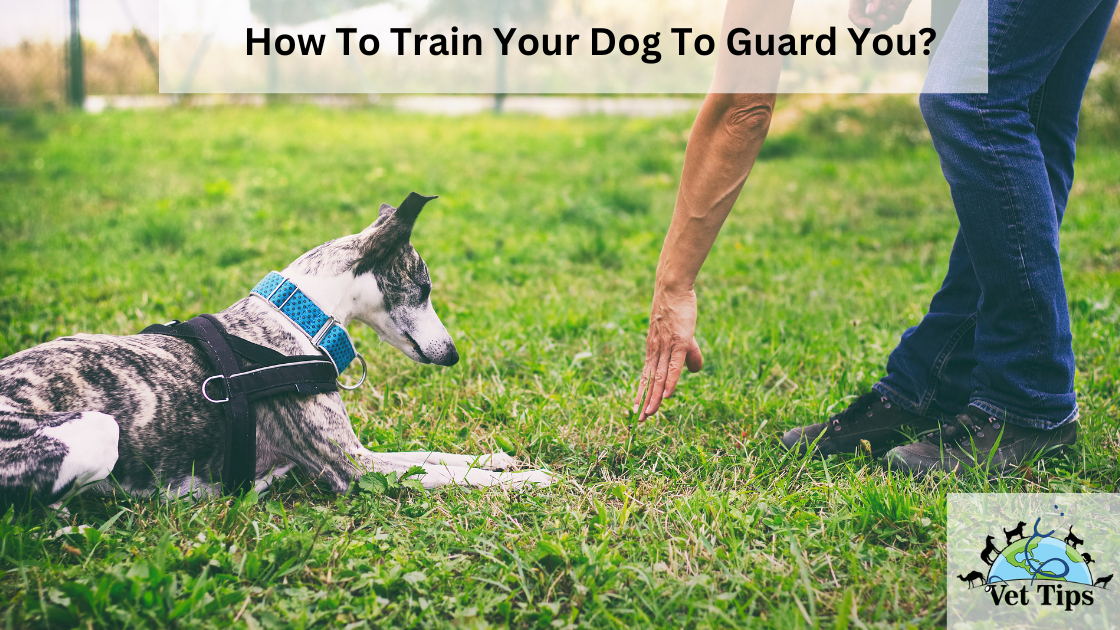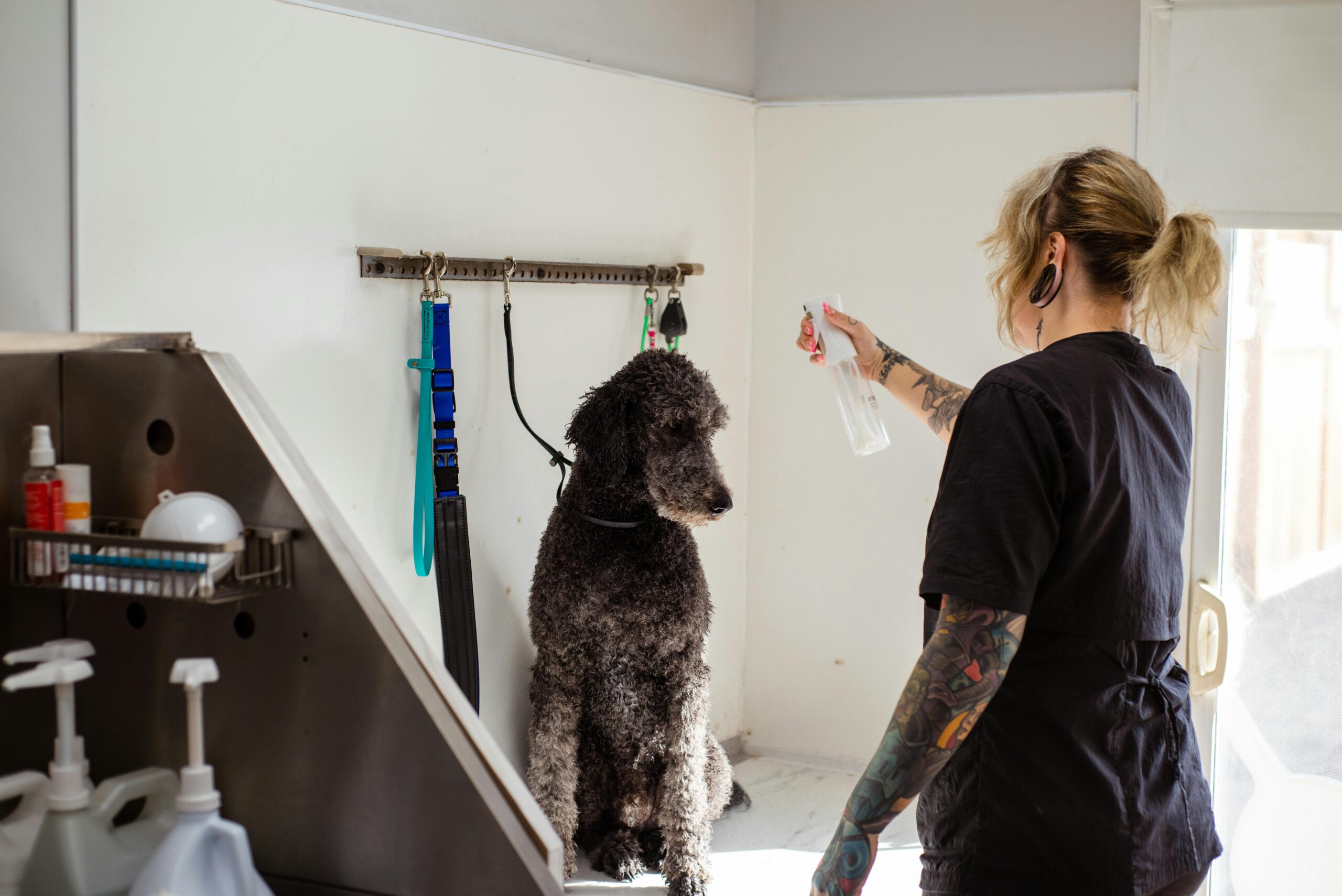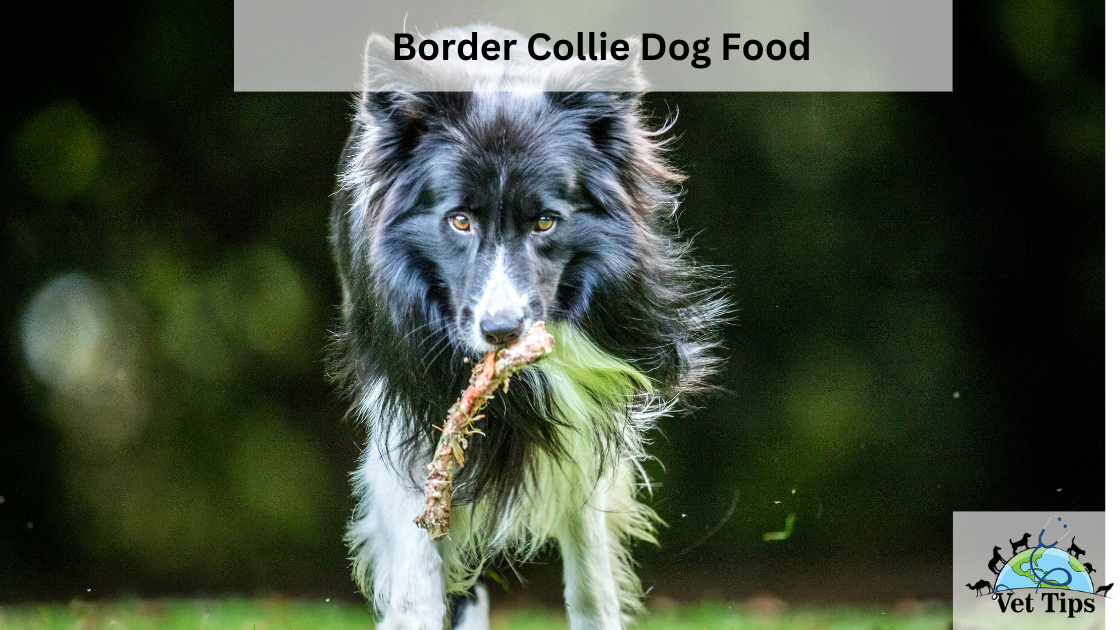Having a dog that can protect you and your loved ones can provide a sense of security and peace of mind. While it’s essential to remember that dogs are not meant to be aggressive or dangerous, training them to guard you responsibly can be a valuable skill. In this guide, we will explore “How To Train Your Dog To Guard You?” to be a reliable guardian, emphasizing positive reinforcement and responsible ownership.
The Difference Between Guarding and Aggression
Before we dive into the training process, it’s crucial to understand the difference between guarding behavior and aggression. Guarding behavior is when a dog instinctively protects its family or territory from perceived threats. On the other hand, aggression involves the intent to harm or attack. As responsible dog owners, we aim to encourage guarding behavior while avoiding aggression.
Evaluating Your Dog’s Temperament
Not all dogs are naturally inclined to be guardians. Some breeds, such as German Shepherds, Rottweilers, and Doberman Pinschers, are known for their protective instincts. However, individual temperament also plays a significant role. Look for signs of alertness, loyalty, and protectiveness in your dog’s behavior.
How To Train Your Dog To Guard You?
Everyone is familiar with the “guardian angels” at their homes in the form of a fluffy buddy. Yes, I am talking about the pet dog you own. Dogs have a natural gift to protect by guarding. It’s not uncommon for a family dog to defend members of your family and loved ones. Mother nature is astonishing! If you want protection by your dog, you should remember that this is not an attack dog that may require special authorization and dog training or may even be prohibited in your area.
It’s better to begin guard dog training at an early age. Age is just a number as an old dog can also be taught new tricks but keep in mind that training an older dog will take more time than training a younger dog. As a bonus, a dog devoted to you and your family will be more active in his parental instincts and will be easy to train dogs.
Loyalty and Devotion; is what they are offering
Training your dog to guard you will only enhance his value as a part of your family. After dog behavior training, the dog will remain vigilant for outsiders and potential hazards to any individual of your household. Remember that your dog considers you and your family members part of his group. So, as the Alpha, you and your family should be viewed as a pack, one that he is naturally inclined to defend against outsiders and other threats.
What is the easiest dog breed to train for guarding?
Your dog’s ability to protect you or be trained for protection dog training depends on its breed. Some breeds, such as German Shepherds, Rottweilers, and Doberman Pinschers, are naturally protective and easiest dogs to train. The objective is to educate your dog to bark and behave threateningly toward strangers, not introduce him to attack. To be a guardian, not a killer, is what you’re teaching him. Positive reinforcement dog training is what you are looking for.
Your Options; Your Choice
Is this the sort of dog you’re looking for? When dealing with companion dogs, the behavior and training required are serious issues. People who own dogs don’t want a dog that only responds to them. They want a family-friendly dog. If they live by themselves most of the time, they may not guard properly. So, socialize your dog. Plus, isn’t that trending to be social?
Do you desire a friendly pet and a solid personal protection dog? Isn’t that conflicting? Not everyone or every dog can benefit from these dog training methods. Protection dog training must teach them to be well-socialized, fearless but not hostile, and keenly aware of their owners’ every move. Some Schutzhund (German meaning guard dog) are good home pets and are well known for their dog obedience training, dog guard training, and dog behavior training.
STOP! Take a step back and do this!
Ensure that your dog knows basic dog training, including commands like sit, stay, come, bark, and quiet before teaching him to guard you and your family. If you don’t do this, you’ll have to include socializing in the training phase.
There are, of course, a few more items you’ll need, such as best dog training treats to encourage good conduct. To teach and keep your dog under control, you’ll need a dog training leash. Pick a few spots where you’ll be able to interact with other people and pets, like dog training, boarding school, and dog training camp.
There’s a long process involved teaching your dog to be a guardian. So, be patient. Your dog wants you to be patient; he’ll get the hang of it. Remember he will teach what you will show him. Aggression cannot be treated with the attack. Remember that training your dog to guard is nothing more than strengthening a natural impulse. Your hard work will pay off in the long run if you take your time and be patient.
How to train your dog to be a guardian?
It’s crucial to follow these best dog training methods to teach your dog to protect you.
1. Panic Word Method
- Pick a panic word:
All household members should have access to the same panic word at any given time. Do not use words like “bark” or “attack.” Instead, use a term like “panic” or “help” that is less frequent to give your dog a clear message that someone is in trouble.
- Use an enthusiastic voice:
You must be excited and joyful while giving your dog the command word. Trust me, this performs better than an angry or fearful tone.
- Stranger Alert:
When a stranger approaches, the average dog will bark. You must be wondering how to train a dog to stop barking at strangers? Use this behavior by inviting a stranger to the front door and ringing the bell. Give your dog the command word as soon as he begins to bark. To calm him down, tell him to stop barking. Be sure to shower him with praise and rewards whenever he accomplishes this.
- Continuing practice:
If you continue to do this, you will have to use the same combination of barks and treats to get him to understand the instruction. This might take days or weeks.
- Outside world:
How to train a dog to walk on a leash? This might look troubling and hectic but believe me, it’s worth it for socializing training your dog. It’s time to take the dog for a long walk on a leash. Set up a few familiar and unfamiliar faces along the road. Please give him a reward and a treat and train dog not to bark at other dogs. This promotes friendship. Then have strangers come and panic him. Let off his leash and instruct him to quiet down. When he does, reward him. This emphasizes stranger danger.
- Consistency and faith are the keys:
The remainder of the workout consists of a lot of repetitions. Dogs learn to distinguish between good and bad people over time and guard their masters on demand.
2. Leash Tug Method
- Attach his leash:
Clip your dog’s leash and walk him. Leash training and off-leash dog training will help.
Use this sturdy leash for dog guard training
- Go for a road Walk:
You’re leading your dog down a planned course, passing folks he knows and those he doesn’t.
- Bad folks:
When he sees the strangers, gently tug on his leash. You can instruct him to “quiet” three times if he starts barking at them. (If your pup doesn’t understand this command, use the ‘Speak’ approach.) Praise and reward him; this reinforces the behavior that will make you feel safer with your dog protecting you.
- Practice until perfect:
Practice this method until your dog understands the concept and barks to warn and defend you.
- Last assessment:
Hold him as a ” strangers ” approach with your dog on a leash; hold him as a “strangers” approach. Encourage them to employ the leash pull and ‘quiet’ cues, and when he responds, treat him with their favorites.
3. Speak Technique
- Develop your dog’s social skills:
It would be best to educate the dog to be sociable before teaching it to guard you and your family. This involves taking him to a park with plenty of people and dogs. Allow “nice” people to fawn over, pet, and even pamper your dog. While you’re out, practice simple instructions and reward him for obeying dog training treats. This tells him who the pack’s Alpha is. Teach them panic words too.
- It’s time to quiet up!
The next step is to train a dog not to bark on cue. Allow your dog to bark three times and then give him the ‘quiet’ command. When he stops barking, say “quiet” or “stop.” Repeat these methods until you have complete control over his barking.
- Repetition is the key to success:
Repetition will educate your dog on when to bark and stay silent.
How To Train Your Dog To Guard You? (Cont.)
Tips on how to train your dog to keep you safe
Learn to Train Your Dog Obedience:
Best dog training must include basic obedience dog training, which includes responding to all the following commands: He should always sit, lay, or come to you when called. How to train a dog off-leash? They must follow you.
Make Your Dog More Social:
Dog separation anxiety training is essential to make them social. This is ideally done during the sensitive socialization period (up to 16 weeks), but this is not always doable. Every trip is worth it. Get her closer to inspect if you spot anything odd, especially if your dog is scared. Emotional support dog training will help your dog in this regard. Your dog must also identify a regular pedestrian and not feel frightened or compelled to threaten anybody he meets. Not every breed can identify the threat.
Make Your Dog bark When You Tell It To:
Whenever a stranger approaches, urge your dog to bark. In some cases, a dog who reacts to “attack” instruction but does not bark might be less effective than the one who barks. This command is complex for some dogs to learn.
Please take notice of your dog’s normal behavior; he may respond. Many dogs have a natural tendency to bark; however, it may be necessary to educate your dog that an order to cease barking is acceptable. Instruct him to sit down and then tell him to stop barking when he has done so. If your dog won’t bark on-demand or even at strangers, he’s not a good protection dog option.
Dog Defensive Coaching:
Your dog must be trained by interacting with an unknown person as part of training. A “stranger” goes up to your dog during the stroll and challenges it. This guy could be wearing anything from an assault suit to a quilted cover on his arm, but it’s not like he needs it. Your dog needs to run away when you give him a command, and he barks back at him. Your dog’s confidence will grow. I believe this is an appropriate point to finish training.
Before you train your dog to attack, think twice
It’s not good to have a dog trained to attack around the house. You should know this before you go any further. Attack dog training is equally vital in protection training. The question arises, “how can you train your dog to attack command only?” According to anecdotal evidence, both family attack dogs are peaceful, and family attack dogs attack and damage members of their own family (child most of the time). Additionally, your dog may bite someone who approaches you to speak; you risk being sued and losing all your own because of your dog’s training as an attack animal.
It’s likely that the next time “unknown” confronts your dog and threatens to bite, he’ll start barking before you can even give him an order. You can then let him go up and grip the stranger’s arm that is protected. If he doesn’t approach the stranger on his own, you may have to tell him “Get him” in an eager voice to get him going. You should bring your padded arm close to your dog’s face, scare the dog, and urge him to bite if he doesn’t approach the stranger at first. To be a personal security dog, an animal must not be afraid of strangers.
ALERT: Train Your Dog to Go back!
A personal protection dog’s foundation training should include this skill. However, he must always be prepared to leave the victim alone. A dog should be instructed to “leave it” and rewarded for not biting the “stranger.” He might turn nasty and uncontrollable later if your dog doesn’t answer to the “leave it” order at this point. If this happens, you should not consider him for personal protection training.
Learn about the personality traits of your dog.
- Guard dogs should be protective of their handler and their property.
- A confident guard dog is vital.
- An effective guard dog must also be forceful. Approaching a stranger or unfamiliar scenario with confidence is a trait of an assertive dog
- When a stranger approaches, a well-trained guard dog will not be unduly aggressive in protecting its owner.
What are the advantages and disadvantages of guard dogs?
Advantages of Protection Dog:
- Dogs raised from puppyhood to be highly protective of their trainers, and the roles they hold are known as guard dogs.
- Some breeds of guard dogs, such as Rottweilers, Pit Bulls, German Shepherds, Bulldogs, Boxers, and Doberman Pinschers, are so terrifying because of their species that they don’t require any training at all.
- You don’t have to think about a guard “jamming” or losing ammo as you would a rifle when it comes to protection.
- It is possible for dogs to feel intruders outside the house and inform their owners before realizing they are there.
- In most cases, you will not be startled if a stranger approaches you or enters your property when the dog is there.
- Dogs can go anywhere where firearms cannot.
Disadvantages of Protection Dog:
- Before training your dog to be a guard dog, ensure they have on command dog training like sitting, staying, leaving it, and lying down—no guarding or protecting until they understand the fundamental commands.
- No matter how nice and calm they seem with their master, trained security dogs should never be left unattended with strangers.
- A giant, hard-working breed like a German Shepherd is the finest choice for a security dog.
- If your certified guard dog does bite someone, you might be held liable for their injuries.
- Anyone besides the dog’s primary handler can’t be a buddy to a natural protection-trained dog. Others thrive in a home but function best when only one person to rely on.
How To Train Your Dog To Guard You? (Cont.)
What Dog Breeds Make the Best Home Security Dogs?
If you know what you’re looking for, you can teach any breed of dog to be a guard dog. Large dog breeds are widely utilized as guard dogs because of their size, strength, and intimidation.
Some of the most popular guard breeds of dogs are:
• Belgian Malinois
• German Shepard
• Rottweiler
• Staffordshire Bull Terrier
• Rhodesian Ridgeback
• Puli
• Dutch Shepard
• Cane Corso
• Akita
• Bullmastiff
• Doberman Pinscher
While giant dogs are frequently employed as guard dogs, any dog with a few essential behavioral qualities can be trained as a guard dog. When picking a guard dog, look for attributes such as loyalty, attentiveness, obedience, and fearlessness.
Territorial, aggressive, and frightened dogs do not make ideal guard dogs. They frequently take their jobs too seriously and fail to distinguish between dangers and innocuous people. Due to the potential of a violent attack on anyone who’s not a threat, such dogs should not be permitted to function as guard dogs. When guarding their property, guard dogs must maintain their composure.
Summary: How To Train Your Dog To Guard You?
Teaching your dog to defend your property involves both your obedience and commitment. Following the techniques described in the article will assist you in effectively training your dog to be a guard dog. The most OK dog for defending your house or other property is one that is calm, loyal, and obedient. Professional dog training will be a good step for positive dog training. Selecting the appropriate breed of dog is also critical for successfully training a guard dog and, therefore, should be thoroughly explored before making any decisive guard dog selections.
Tell us in the comments, how you like our article “How To Train Your Dog To Guard You?“
For similar posts like this, click here.
For the source file, click here.









One thought on “How To Train Your Dog To Guard You?”